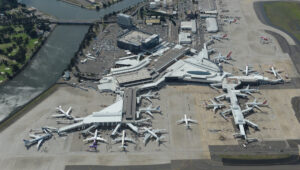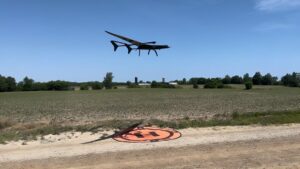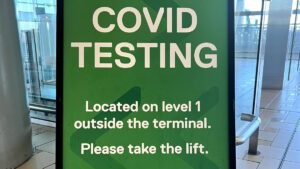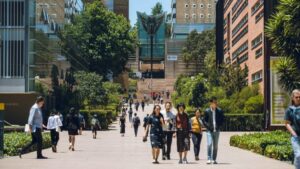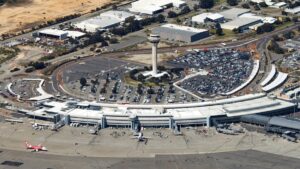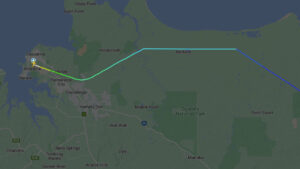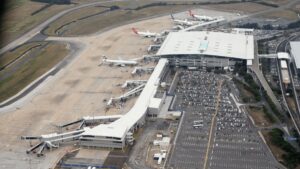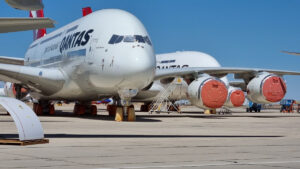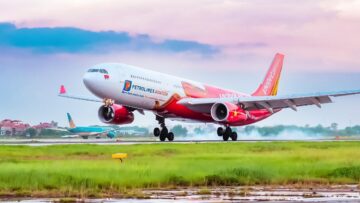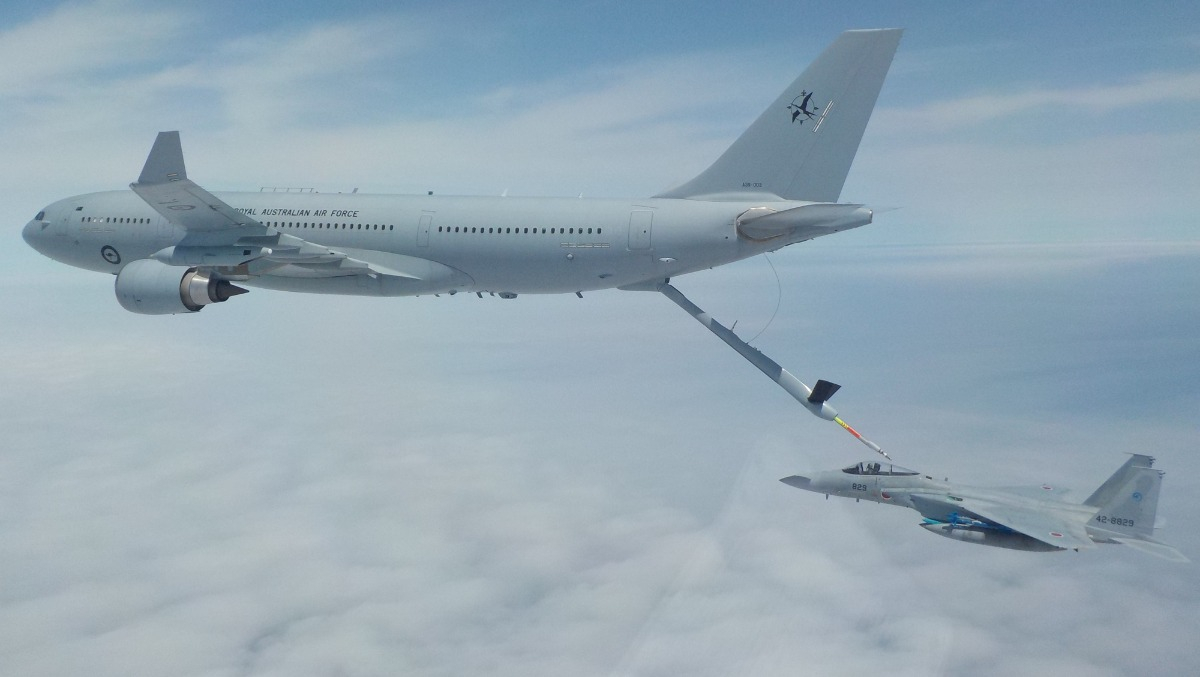
The RAAF has conducted refuelling trials for the first time with F-15J Eagle fighter jets from the Japan Air Self-Defense Force.
RAAF KC-30A multi-role tanker transport (MRTT) aircraft were able to use an advanced refuelling boom to connect with the F-15s in flight during day and night over Japan between 29 March and 26 April.
A total of 11 flights were made with 325 contacts between the aircraft as the RAAF obtains engineering data and trains KC-30A aircrew on refuelling F-15s.
The F-15 Eagle is an all-weather fighter known for its unprecedented manoeuvrability and acceleration, range, weapons and avionics.
It was produced under licence by Mitsubishi Heavy Industries and first introduced in 1981.
Air Vice-Marshal Darren Goldie, Air Commander Australia, said these latest trials would further enhance air cooperation between Australia and Japan.
“Cooperation between our air forces is dependent on overcoming great distances, and air-to-air refuelling is an essential part of how we accomplish this,” AVM Goldie said.
“In 2022, we conducted similar trials with JASDF F-2A fighter aircraft, which enabled their participation in Exercise Pitch Black 22 in the Northern Territory.
PROMOTED CONTENT
“The success of these latest refuelling trials reflects our commitment to building on our deep and enduring relationship, understanding each other’s strengths, and further elevating our interoperability.”
The RAAF operates a fleet of seven KC-30A MRTTs from RAAF Base Amberley, west of Brisbane, with each aircraft able to carry more than 100 tonnes of fuel and transfer part of that load to a receiver aircraft.
RAAF KC-30A aircraft have been used extensively in support of refuelling Australian and foreign aircraft since their introduction to service in 2011.
“This cooperation and mutual understanding is an essential part of ensuring a secure, resilient, and prosperous Indo-Pacific,” AVM Goldie said.
Australian Aviation reported earlier this week how the RAAF has begun streamlining recruit training under a “less is more” approach to graduate trainees quicker and more efficiently.
Under the new system, 1 Recruit Training Unit (1RTU) – which is responsible for two-thirds of the Air Force’s initial preparation – will reduce from 11 weeks to nine, and its training block will be tightened.
RAAF Officer Training School – which conducts the bulk of the remaining training – will see a more significant reduction from 17 to 12 weeks.
The shortened course means 1RTU can run additional sessions during the year with less overlap, resulting in an increased 1RTU capacity by 85 per cent compared to the number of recruits trained in 2022.
Airfield Defence Guard Corporal Ricky Watson said compression of the course allowed the ground defence element to have more time with trainees instead of splitting their time into different blocks.
“We wasted time signing weapons in and out and going through revision of topics we covered in prior weeks,” CPL Watson said.
“Now it’s weapons, range, chemical, biological, radiological and nuclear (CBRN) and ground defence. We’re able to get a lot more out of it knowing we don’t have to revisit things later on course, and they are more focused.”
- SEO Powered Content & PR Distribution. Get Amplified Today.
- PlatoAiStream. Web3 Data Intelligence. Knowledge Amplified. Access Here.
- Minting the Future w Adryenn Ashley. Access Here.
- Source: https://australianaviation.com.au/2023/05/raaf-refuels-with-japanese-f-15j-eagles/
- :has
- :is
- 1
- 100
- 11
- 12
- 2011
- 2022
- 22
- 26
- a
- Able
- acceleration
- accomplish
- Additional
- advanced
- AIR
- air-to-air
- aircraft
- an
- and
- approach
- April
- ARE
- AS
- Australia
- Australian
- aviation
- base
- BE
- been
- begun
- between
- Black
- Block
- Blocks
- boom
- Brisbane
- Building
- by
- CAN
- Capacity
- carry
- chemical
- COM
- commitment
- compared
- conducted
- conducts
- Connect
- contacts
- cooperation
- course
- covered
- Darren
- data
- day
- deep
- defence
- dependent
- different
- Dont
- during
- each
- Earlier
- efficiently
- element
- elevating
- enabled
- enduring
- Engineering
- enhance
- ensuring
- essential
- Exercise
- First
- first time
- FLEET
- flight
- Flights
- focused
- For
- Force
- Forces
- foreign
- from
- Fuel
- further
- get
- going
- graduate
- great
- Ground
- Guard
- Have
- heavy
- How
- HTTPS
- in
- increased
- industries
- initial
- instead
- Interoperability
- into
- introduced
- Introduction
- IT
- ITS
- Japan
- Japanese
- Jets
- jpg
- Knowing
- known
- later
- latest
- Licence
- load
- Lot
- made
- March
- means
- more
- mutual
- New
- night
- nuclear
- number
- obtains
- of
- Officer
- on
- operates
- our
- out
- over
- part
- participation
- Pitch
- plato
- Plato Data Intelligence
- PlatoData
- Prior
- Produced
- quicker
- range
- Recruits
- reduce
- reflects
- relationship
- remaining
- Reported
- resilient
- responsible
- resulting
- Run
- Said
- School
- secure
- see
- service
- sessions
- seven
- significant
- signing
- similar
- since
- streamlining
- strengths
- success
- support
- system
- territory
- than
- that
- The
- their
- These
- they
- things
- this
- this week
- Through
- time
- to
- Topics
- Total
- trained
- Training
- trains
- transfer
- transport
- trials
- two-thirds
- under
- understanding
- unit
- unprecedented
- use
- used
- was
- Watson
- we
- Weapons
- week
- Weeks
- were
- West
- which
- will
- with
- would
- year
- zephyrnet

